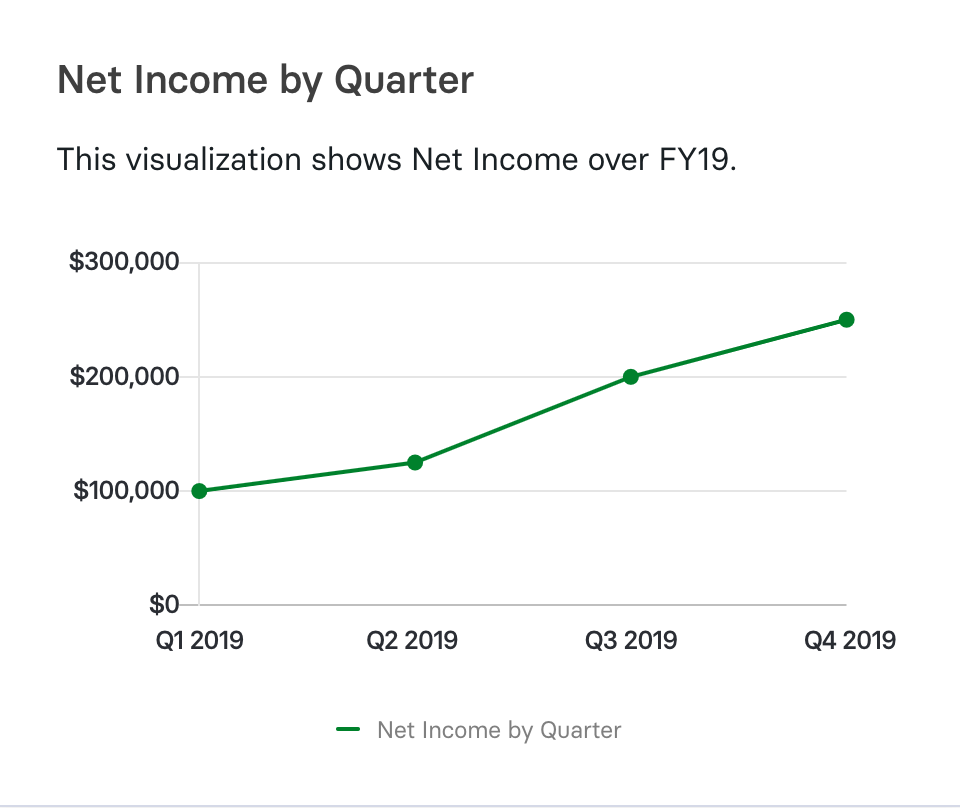Tax provisioning involves several complex tasks that can take hours to complete — hours that impact the future growth of the business. While these tasks are typically siloed within accounting teams, they hold huge implications for the business at large if any data integrity issues creep in throughout the year.
In a strategic finance organization, it’s helpful to understand what tax provisioning is and be aware of the common pitfalls and what strategies you can use to simplify the process. Better yet, it’s important your data remains accurate and reliable year-round to ensure leadership can truly ideate on growth goals with stakeholders — and this guide helps build the foundation for it.
Table of Contents
What Is Tax Provisioning?
A tax provision is the estimated amount of money businesses set aside to pay their local, state, federal, and (if applicable) foreign income taxes for the current year. Since businesses don’t know their exact net income or applicable tax rate until the end of the year, they generally use estimates to calculate tax provisions. Most companies also choose to add a buffer amount to make sure that they don’t underestimate their taxes.
Your actual income tax is calculated as:
Income Tax = Net Taxable Income from Business x Applicable Tax Rates
In theory, your tax provision calculation might look something like this:
Tax Provision = (Estimated Net Taxable Income x Estimated Tax Rates) + Buffer Amount
While this looks like a simple formula, the actual process of estimating taxable income and appropriate tax rates is complicated.
Common Challenges of Tax Provisioning
Tax laws continually shift within the U.S. GAAP (Generally Accepted Accounting Principles) and income tax accounting levels. Those constant changes put pressure on accounting teams to adapt and properly calculate tax provisions to avoid potential penalties or losses come tax season.
The following pitfalls are general examples of what you might deal with regarding accounting complexity and data management when trying to get tax provisioning right.
Bridging Differences Between GAAP and IRS Accounting Rules
If you’re like most businesses, you use GAAP guidelines when managing your company’s accounts and reporting net income. But the IRS uses a different set of rules to determine your business’ net income for the current year’s income tax expense.
So, you need to make adjustments to make your book accounting (GAAP) better match the tax accounting amounts used by the IRS. These adjustments are known as permanent and temporary differences.
Permanent differences are expenses you can deduct from your net income in book accounting — but not in tax accounting. Temporary differences are items that both the GAAP and IRS recognize, but at different times.
For example, say you use the accrual accounting method, and you receive advance payment for an order. You have to report that income on your tax return even though it won’t appear on your book income until it’s earned.
Temporary differences mean you’ve earned more revenue than you would report on your tax return for the year — resulting in your deferred income tax liability.
While these rules cause a bit of a runaround, they are necessary to understanding the company’s future tax obligations. Accounting Standards Codification 740 (ASC 740) bridges your income tax provisions with GAAP guidelines.
By approaching your financial statement with an eye on income (ASC 740 doesn’t affect any payroll, sales, or property taxes), you key into important information around tax liabilities and shareholder equity. You gain predictive information that not only evaluates future tax obligations, but toward future growth potential, such as mergers, sales, or acquisitions the company participates in.
Accurately Estimating Temporary Differences
Your tax provision includes two parts: current year income tax expense and deferred income tax expense.
Current year income tax expense is your net income plus all differences multiplied by your tax rate. That’s the estimated tax amount you have to pay on this year’s taxes.
Your deferred income tax expense is a tax expense recorded as a liability on your books, but you don’t have to pay it this year. Think of it as a deeper dive into your temporary differences. To calculate your deferred tax income expense, add up all your temporary differences and multiply by the tax rate.
The pitfall here relies on the accuracy of your balance sheet — especially your temporary differences. Particular items may qualify as an income tax difference one year, but fall into GAAP the next — and may not even qualify again the year after next.
Amortization, deferred revenues, and prepaid accounts, among other items, must be categorized properly. If they’re not, your deferred income tax expense estimates fall further into inaccuracy — and can result in major paybacks later on.
Integrating Data From Multiple Sources
Since you only file taxes once a year, it’s tempting to wait until the last minute to gather the financial information you need. That leaves you sorting through a large volume of data that might be separated into different sources and formats. Plus, you have a looming deadline to meet.
Working with several data sources under a time crunch can cause errors and bad income estimates. Unfortunately, that carries over to your tax provision calculations and might cost you late fees or penalties for underestimating your taxes.
How to Calculate Tax Provisions for Your Business
As tax provisioning breaks out into two amounts (current and deferred tax expenses), there are separate processes to get to each expense.
Your current tax expense is what the company owes in taxes, while the deferred tax expense will tell you if any non-cash expenses are allocated to cover any unpaid tax liabilities.
Part 1: How to Calculate Your Current Year Income Tax Expense
Your current income tax expense is the net amount your company owes in taxes. It accounts for your business’ net income and the permanent and temporary differences in tax calculations between the IRS and GAAP.
Follow these steps to find your current tax expense:
- Find your book estimate of net income using GAAP guidelines or financial planning software.

2. Add or subtract permanent differences to your book estimate of net income. Permanent differences are allowed as deductions under GAAP but not for tax accounting purposes.
3. Compare your GAAP income tax calculation with the current year balance sheet to find your temporary differences amount. Temporary differences include income or expenses that are included on income taxes and GAAP — but not in the same year.
Examples of reversible differences include:
- Depreciation
- Bad debt
- Expenses incurred but not yet paid
- Income received but not yet earned (under the accrual basis of accounting)
Once you’ve taken both permanent and temporary differences into account, you’ll know your current year’s taxable income:
Current year taxable income = Pre-tax income – (Permanent Differences + Temporary Differences)
4. Deduct tax credits and net operating losses (NOL) from your current year taxable income. The amount you have after this step represents your estimated taxable income.
5. Apply the current tax rate. Multiply the remaining figure with the current federal tax rate to get your current tax expense for income provision.
The overall formula for current tax expense is:
Current tax expense = {Current year taxable income – (Net operating losses + Tax credits)} x Federal tax rate
Part 2: How to Calculate Deferred Tax Expense
Calculating your current tax expense is pretty straightforward. Most of the confusion on tax provisioning usually comes from trying to figure out the deferred tax expense.
Your deferred tax expense is a cost that appears on your company’s GAAP balance sheet as either a liability or an asset. It accounts for the deferred effects of:
- Income
- Expenses
- Net operating losses
- Tax credits
Depending on the reversal of temporary differences, your company will either owe tax or receive a future tax benefit. The estimation considers temporary differences and applies the tax rate to the total.
Keep Your Data Accurate & Reliable with Strategic Finance Software
How to Simplify the Tax Provisioning Process
Nailing down what tax provisioning is requires a hard look at your financial statements and continually updating yourself on tax regulations. The key to simplifying this process is asking, “How can I make our taxes a forward-thinking endeavor that responds to our current growth needs now?” Here’s how you can get ahead and simplify the tax provisioning process.
Be Proactive
Create resources ahead of time that can help you stay organized and ensure that you have all the information you need. A tax provision checklist lowers the chance of mistakes by reminding you of all the items you need to consider, like choosing the right criteria and requirements.Bloomberg has a sample tax provision checklist for reference.
Leverage Automation
Many companies still use Excel spreadsheets to estimate taxes and create financial reports, while others turn to enterprise-level tax provisioning software such as Bloomberg, OneStream, and ONESOURCE.
Tax provisioning software automates data collection, consolidation, and analysis, but it’s still a best-of-breed solution in the broader CFO software stack. You still need a connective tissue to connect income data with headcount, expense, and billing data that remains as up-to-date as possible without any discrepancy or human error.
Organize Your Data
Make the tax provisioning process quicker and simpler by keeping clean and reliable data.
Start by creating a chart of accounts (CoA) to monitor transactions during a specific financial period. Make sure your foundation for financial reporting is solid by following the best chart of accounts structure.
Mosaic can help with that by connecting all of your source systems. Finance automation reduces error and saves time, leaving room for higher-value tasks.
Reliable Data Is Your Foundation for Better Tax Seasons
Learning how to calculate tax provisions takes effort, but it’s a step toward creating a foundation of strategic finance for your business. It’s your opportunity to have finance be a forward-thinking leader to ensure that your tax provisions adjust to whatever growth cycle the company experiences from quarter to quarter and season to season.
CFOs, finance teams, or tax departments can simplify the tax planning and provisioning process by following good practices such as creating a checklist and organizing your data is a great start — but ensuring that data remains accurate in real-time is the next step toward true strategic foresight.
Mosaic integrates with your source systems to ensure that any data changes reflect in real-time to keep your data accurate and reliable. Reach out to learn how Mosaic has helped companies of all sizes manage their financial data.
Tax provisioning FAQs
Are tax provisions and deferred tax the same?
Not exactly. Deferred tax is a part of your tax provision that is recorded as a liability, but does not have to be paid by year-end. Tax provisions typically include deferred tax, current tax expenses, and an additional buffer.
What is a corporate tax provision?
How is a tax provision calculated?
Own the of your business.

